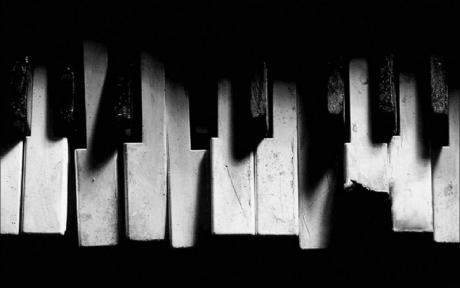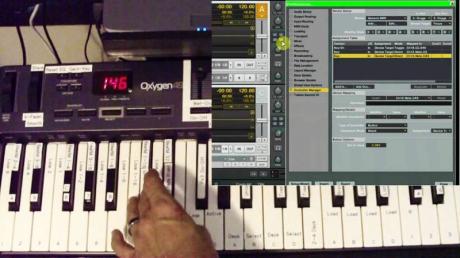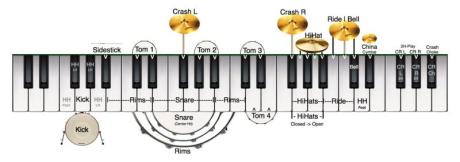Rockové klávesy - MIDI Mapping 101
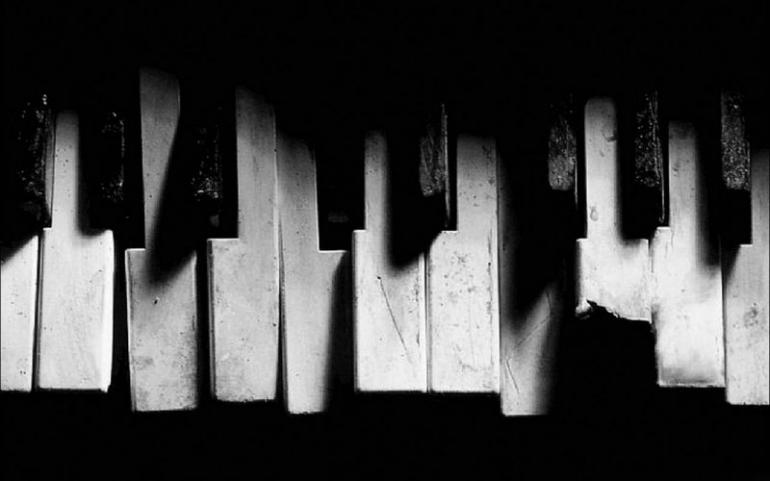
Greetings, readers, and welcome to another installment of Rock Keyboards. This week we are going to talk a little about mapping on a MIDI keyboard to get some cool options for drum and sample sounds. Sometimes in your setup, it's cool to have one keyboard that is just set up to trigger samples and drum hits. With clever MIDI mapping, you can usually get a big variety of sounds by assigning one sound to every key or a small range of keys. let's talk about a few common usages of this technique.
How to assign sounds with MIDI mapping
Every keyboard and digital audio workstation (DAW) have a slightly different method of MIDI mapping, so you will have to read up a little about mapping sounds for your own rig. In general, you select a range of keyboard notes for your samples to rest on. Some keyboards and DAWs will pitch correct these for you, and some instruments, especially older keyboard samplers, will need this to be done manually. Let's say you have a 5 octave MIDI keyboard. Middle C will be the 3rd C from the bottom of the keyboard. The lowest C on a 61 key controller is called C2, the highest C is C7. Let’s take C2 as a starting point. If you go up 1/2 step, the note will be called C#2. If you go another 1/2 step up, D2. This process continues until you get to the octave above C2 which we then call C3. Every note in that octave will have the number 3 after it until you get to middle C or C4. So, let’s say you wanted to have a few bass notes on the bottom of your keyboard. You would find the sound or sample you want to use then assign the range of notes you would like it to work over. If you chose the range C2-C3, the whole bottom octave of your 61 key keyboard would have bass notes. Remember, some programs will automatically pitch samples, and some will have to be pitched manually, so just check the pitch against a regular keyboard or acoustic instrument to be sure. Now let’s look at a few applications.
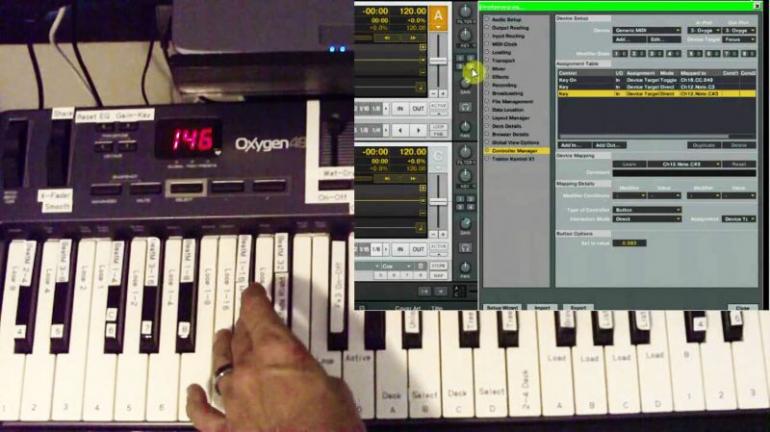
Drum set layout for MIDI keyboards
These mappings are usually done for you on most drum machine plug-ins. It's very common on a 61 note keyboard for the bass drum, or one of the bass drums, to be C2. A snare is likely to be on D2. Cymbals are usually at the top of the C2 octave and sometimes go slightly above. Many musicians are very adept at playing a drum beat with a few fingers or maybe even one handed with this mapping. A cool application of this idea may be to have an octave of drums on your sample keyboard in the C2 octave, have a few bass samples in the lower half of the C3 octave with some horn hits in the upper half of the C3 octave. In this way you can arrange your samples and sounds so whole pieces can be performed with just a few octaves of your MIDI keyboard. This can come in super handy with a production that needs a few more sounds or in a live set to create unusual breakdowns and atmospheres. Some plug ins are made specifically for this purpose as we will see in the next section.
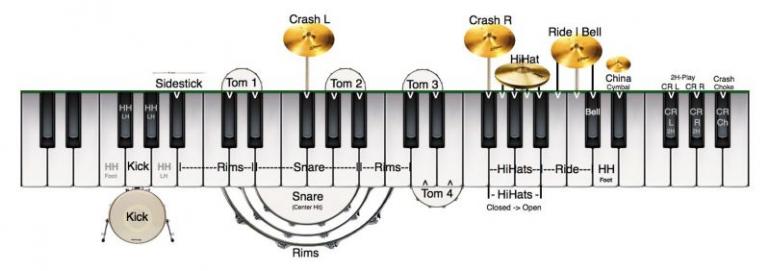
to be continued
Rockové klávesy
Slovníček frází a hudebního žargonu
Vážení čtenáři, v dnešním slovníčku se podíváme na následujících šest výrazů. Některé z nich už jsme ve slovníčku měli, v dnešním článku se vyskytují v jiných spojeních, proč si je tedy nepřipomenout.
Mapping: Stejně jako v češtině, map znamená mapa nebo (na/z)mapovat. A právě v souvislosti s přiřazováním zvuků k jednotlivým klávesám, o čemž pojednává článek dnes, hovoříme o MIDI (na)mapování.
Trigger: Znamená spoušť, ale ne ve smyslu nepořádku. Prostě spoušť zbraně nebo spouštěč nějakého mechanismu, případně procesu. Ve slovesném tvaru pak znamená spouštět.
Drum hits: Tady pozor, v článku Brian nepíše o nejslavnějších skladbách pro nástroje. Hit znamená také úder. Pro zajímavost dodám, abyste se třeba někdy nedostali do trablů v nějaké hyperkorektní zemi, že hit somebody znamená někoho zasáhnout, ale hit on somebody znamená někoho balit, lidově „do někoho dělat“. Prostě ďábel se skrývá v detailu a je na něj potřeba dát pozor. A co teprve slovo hitman, které neznamená geniální hudební tvůrce, ale zabiják, nájemný vrah.
Assign: Znamená přiřadit. V článku najdeme how to assign sounds with MIDI mapping, v překladu: jak přiřadit zvuky pomocí MIDI mapování.
For your samples to rest on: Rest znamená odpočívat, have a rest znamená odpočiň si. Rest on je spočinout. V dnešním vydání Rockových kláves Brian možná trochu básnicky říká: „In general, you select a range of keyboard notes for your samples to rest on.“ V češtině bychom mohli přeložit taktéž vzletněji jako „Obecně, vyberete si rozsah kláves, na kterých budou spočívat vaše zvuky.“
